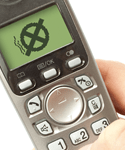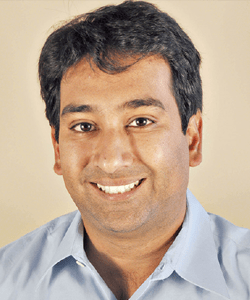Telephone follow-up after an ED visit is an important strategy for monitoring changes in health status and ensuring compliance with discharge instructions. It is also a useful tool for notifying patients of new results or follow-up appointments as well as conducting quality improvement and patient satisfaction surveys. “The ability to obtain successful telephone contact with patients after ED visits has important implications for clinical care and research,” says Adit A. Ginde, MD, MPH. “It enables clinicians to assess patient outcomes, responses to interventions, and adverse events.”
Recent ED-based initiatives have focused on screening, brief interventions, and referral for patients with substance abuse, including tobacco, alcohol, and recreational drugs. The problem with such interventions, according to Dr. Ginde, is that patients are often lost to follow-up. “This can lead to smaller sample sizes, less precision, and potential bias from missing outcomes data,” he says. “There has been growing interest in developing effective ED-based smoking cessation interventions. Many EDs use telephone calls as a primary means of follow-up for ED patients, but few studies have explored the efficacy of this approach when managing cigarette smokers after ED visits.”
Analyzing Telephone Contact With Smokers
Dr. Ginde and colleagues recently conducted a secondary analysis of a prospective cohort of ED cigarette smokers. Published in the Western Journal of Emergency Medicine, the analysis sought to identify the characteristics associated with successful contact at three time points after an initial ED visit by cigarette smokers. Study investigators attempted telephone contact at 2 weeks, 3 months, and 6 months to assess smoking prevalence and quit attempts among current smokers at 10 EDs in the United States. Participants were paid $20 for successful follow-up at each time point. Potential participants with no current residence, a transient residence, or no access to a telephone that is always in service were excluded from the study to reduce risks of being unable to find the person during follow-up.
After recruiting 375 cigarette smokers, Dr. Ginde and colleagues found that most participants (82%) were successfully contacted at one or more time points, but only 47% were contacted at all three time points used in the study (Table 1). The characteristics most predictive of the total number of successful contacts were older age, female sex, and no recreational drug use (Table 2). “These results suggest that telephone follow-up of cigarette smokers after an ED visit has less applicability to younger, male, and drug-abusing patients, all of which are populations known to have higher smoking rates and are typically unwilling to change behaviors,” adds Dr. Ginde. Importantly, the variables related to smoking cessation—such as cigarette pack-years and readiness to quit smoking—and the amount of contact information provided were not linked to successful contact.
Telephone Follow-Up An Ongoing Challenge
“Our data indicate that successful telephone follow-up with smokers is still challenging, despite providing financial incentives and excluding participants who were likely to be lost during follow-up,” says Dr. Ginde. “It’s possible that participants were motivated to avoid follow-up calls because of the guilt or embarrassment of continued smoking, but this hypothesis needs to be studied further.”
“Successful telephone follow-up with smokers is still challenging,
despite providing financial incentives and excluding participants
who were likely to be lost during follow-up.”
To achieve successful telephone follow-up for clinical care or research, Dr. Ginde says it is imperative that investigators be able to find participants, and those subjects must then be willing to cooperate with the purpose of the call. “In most clinical care follow-up scenarios, patients are motivated by their health to receive results or instructions. Unfortunately, getting cooperation from research participants with the main purpose being follow-up is more challenging, particularly in behavioral health and substance abuse research.”
Establishing Effective Contact Methods
The themes that emerged in the study by Dr. Ginde and colleagues may help steer future analyses seeking to improve follow-up care in patient groups already considered high risk for unsuccessful contact, including substance abusers. “It’s important to note that we cannot generalize the results in our research study context with follow-up for clinical care,” says Dr. Ginde. “Serial follow-up is a dynamic process that involves more than just the fixed baseline characteristics of study participants.”
The findings should be seen in the larger context of establishing different contact methods that are effective for follow-up care, according to Dr. Ginde. “These may include email, internet-based formats, social networking, and text messaging,” he says. “Strategies to optimize follow-up rates remain an important challenge for ED-based research, but finding effective approaches will have important implications for other hard-to-reach populations.”




 admin
admin